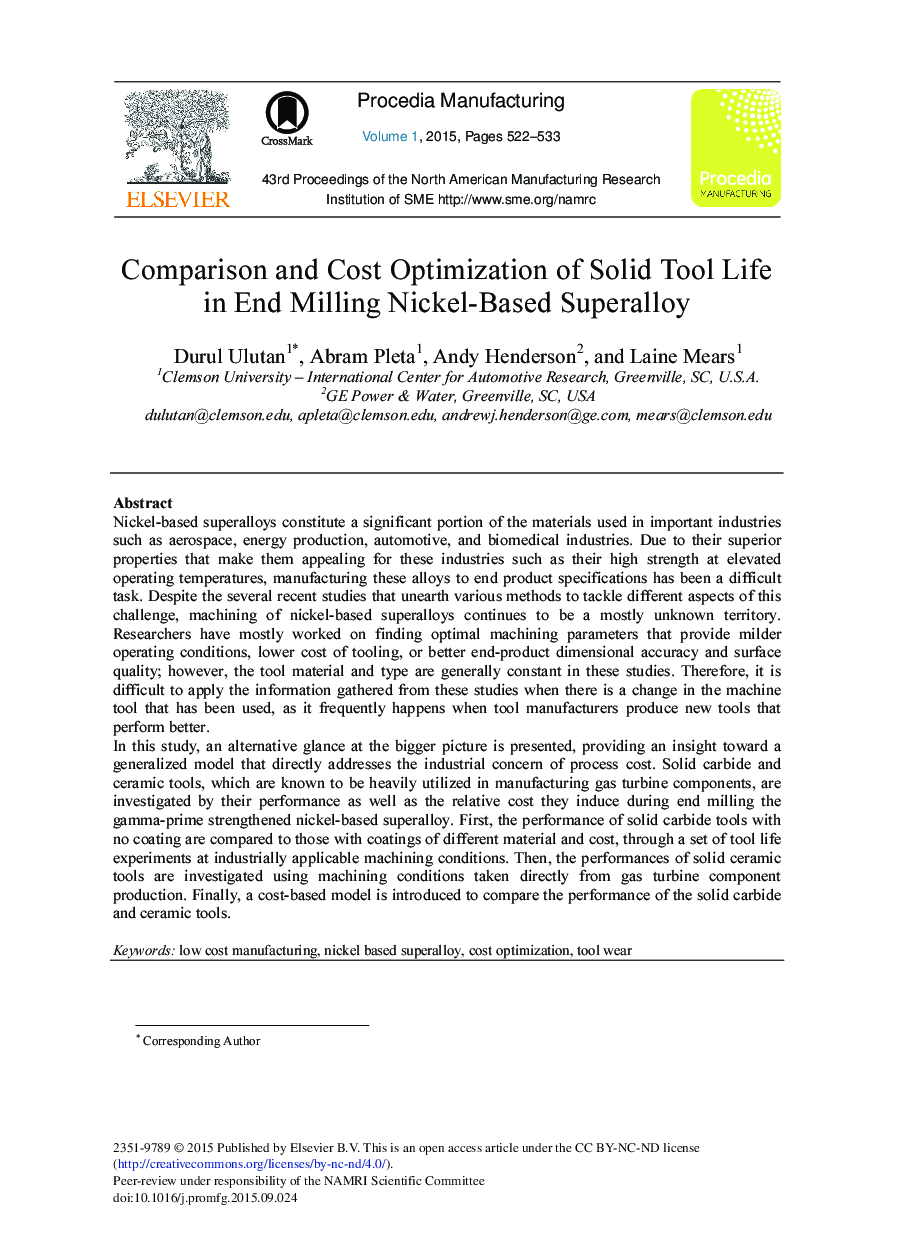| Article ID | Journal | Published Year | Pages | File Type |
|---|---|---|---|---|
| 1143720 | Procedia Manufacturing | 2015 | 12 Pages |
Nickel-based superalloys constitute a significant portion of the materials used in important industries such as aerospace, energy production, automotive, and biomedical industries. Due to their superior properties that make them appealing for these industries such as their high strength at elevated operating temperatures, manufacturing these alloys to end product specifications has been a difficult task. Despite the several recent studies that unearth various methods to tackle different aspects of this challenge, machining of nickel-based superalloys continues to be a mostly unknown territory. Researchers have mostly worked on finding optimal machining parameters that provide milder operating conditions, lower cost of tooling, or better end-product dimensional accuracy and surface quality; however, the tool material and type are generally constant in these studies. Therefore, it is difficult to apply the information gathered from these studies when there is a change in the machine tool that has been used, as it frequently happens when tool manufacturers produce new tools that perform better.In this study, an alternative glance at the bigger picture is presented, providing an insight toward a generalized model that directly addresses the industrial concern of process cost. Solid carbide and ceramic tools, which are known to be heavily utilized in manufacturing gas turbine components, are investigated by their performance as well as the relative cost they induce during end milling the gamma-prime strengthened nickel-based superalloy. First, the performance of solid carbide tools with no coating are compared to those with coatings of different material and cost, through a set of tool life experiments at industrially applicable machining conditions. Then, the performances of solid ceramic tools are investigated using machining conditions taken directly from gas turbine component production. Finally, a cost-based model is introduced to compare the performance of the solid carbide and ceramic tools.
